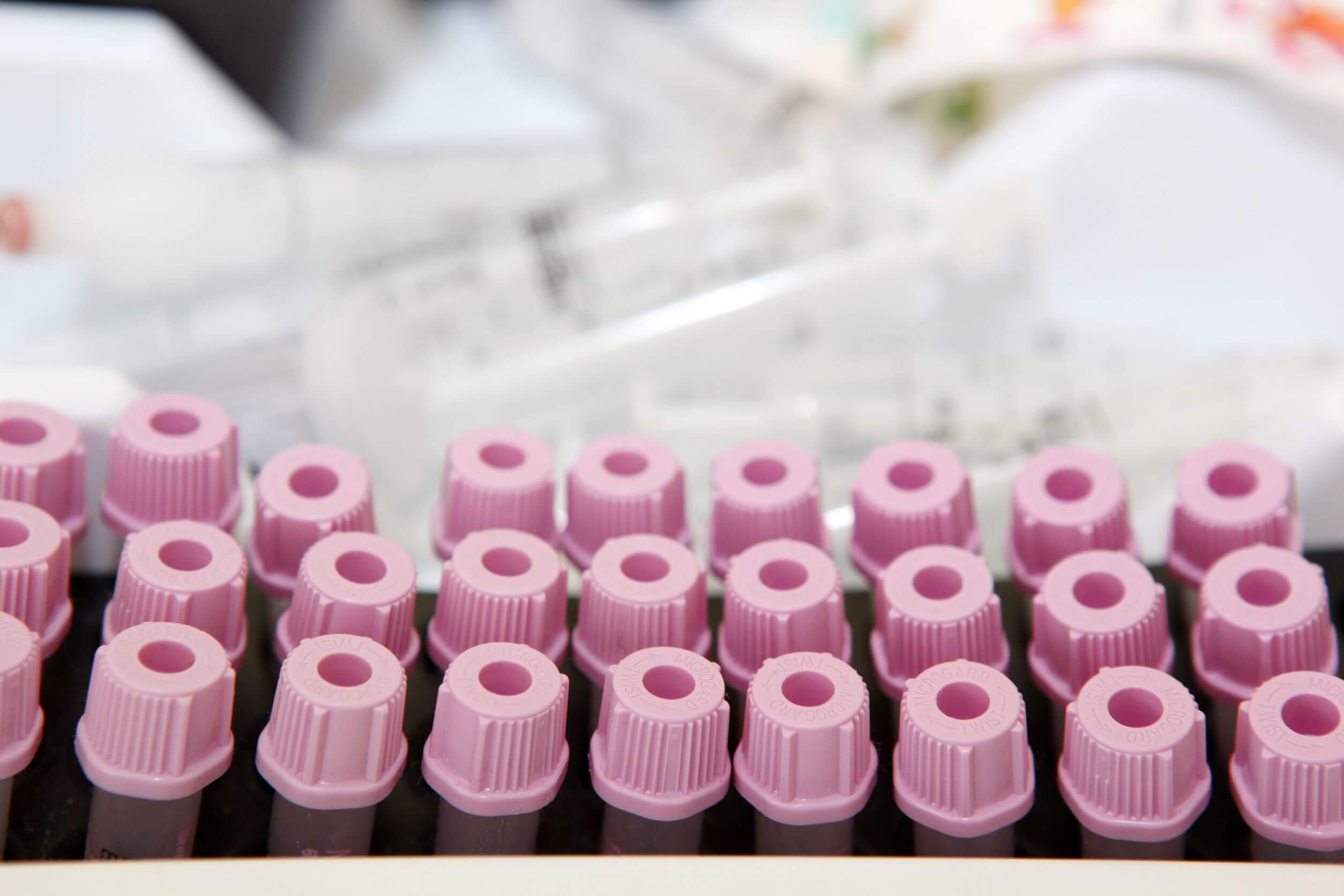What Is Refractory Celiac Disease?

Treatment for celiac disease consists of eliminating gluten from the diet. This prevents the appearance of symptoms and promotes the recovery of the villi in the intestine. However, if patients don’t receive both benefits after a certain period of time, they may be diagnosed with refractory celiac disease.
It’s a rare condition that affects an average of 1% of people with this autoimmune disorder.
Given the persistence of the symptoms and the complications it produces in the body, it’s a condition that can jeopardize the quality of life of those affected. Let’s find out what we know about the disease, why it occurs, and what therapies exist today to deal with it.
Characteristics of refractory celiac disease

From the research carried out, we see that refractory celiac disease affects people who haven’t shown any sign of improvement after going gluten-free for 6 months up to a year. It’s a rare disease, with open lines of research on its development and adverse effects.
When a person is diagnosed with celiac disease, the first step they must do is to remove gluten from their diet. By doing so, this means that the processes in the body that cause it to “attack” itself, and that cause symptoms and wear and tear in the intestinal villi can’t be triggered. The villi are responsible for absorbing nutrients from food.
In those who suffer from the refractory celiac variety, the villi aren’t strengthened, and this causes the persistence of symptoms and other consequences. In general, these are the following:
- A deficiency of vitamin B12, iron, zinc, copper, vitamin D, folic acid, and others.
- Malnutrition
- Diarrhea
- Chronic fatigue
- Abdominal pain
- Weight loss
These are generally more severe compared to celiac disease, they can also increase the chances of suffering from more acute side effects (for example, other autoimmune diseases such as diabetes or even infertility).
Its causes aren’t entirely clear, although it’s known that T and intraepithelial lymphocytes, antigens, and cytokines are involved in particular.
Types of refractory celiac disease
So far, two types of refractory celiac disease have been identified: type I and type II. The first, also known as RCD I, develops when intraepithelial lymphocytes located in the intestinal area are normal. In the second, called RCD II, they form abnormally.
The evidence indicates that patients diagnosed with RCD II have a worse response to treatment and a less promising prognosis. They also tend to develop more associated complications, such as non-Hodgkin lymphoma. Some studies suggest that it’s more common after THE age of 50 with a higher prevalence in women.
Diagnosis of refractory celiac disease

The diagnosis of refractory celiac disease is a bit long and complex. The National Organization for Rare Diseases (NORD) stipulates that the process is done by exclusion. This is because its symptoms are very vague. It doesn’t have a unique characterization and different diseases or disorders can cause changes in the villi.
However, the first thing that doctors will do is to verify that the diagnosis of celiac disease was correct. The tests (endoscopy, biopsy, and blood tests) will then be repeated and the patient’s nutritional history and habits during the last few months will be reviewed.
We can find one answer, for example, in unintentional gluten contamination when cooking. This can be due to incorrect product labeling, reading them incorrectly, eating in non-specialized restaurants, or even not correctly storing foods with and without gluten at home, and not separating them.
It can also be due to hypersensitivity. It isn’t uncommon for medication, toothpaste, makeup, and personal hygiene products to contain this protein (or variants of it). If a celiac uses them, then symptoms will develop with the same intensity even if the diet is a very strict one.
After ruling out the above, which is a complex process, the specialist will also exclude other conditions that can produce symptoms. Investigations have pointed to the following:
- Microscopic colitis
- Bacteria overgrowth
- Pancreatic insufficiency
- Lactose / fructose intolerance
- Irritable bowel syndrome
- Crohn’s disease
- Intestinal lymphoma
To do this, it will proceed to carry out the corresponding tests as appropriate. As can be seen, the diagnosis of this condition is not easy. It takes time, verification tests, additional tests, and habit reviews. Only when all the variables have been ruled out is it possible to give a resounding yes to refractory celiac disease.
Treatment for refractory celiac disease
Despite advances in understanding the disorder, there’s still no standard therapy for coping with the disease. This is partly because it’s a very rare condition, and so the opportunities for testing are limited.
If the patient suffers from decompensation or is malnourished, it’s most likely that parenteral nutrition will be carried out. Doctors will probably prescribe nutritional supplements in order to avoid the complications associated with its deficiency (such as anemia).
Regarding long-term options, there’s evidence that a basic diet can be useful in particularly difficult cases (those with a chronic manifestation of symptoms). Doctors may also prescribe immunosuppressants, such as azathioprine. Studies have supported the use of this in patients with refractory type II celiac disease.
Further studies and research suggest stem cell transplantation as an effective and reliable therapy to help sufferers to cope with the disorder. Consequently, advances in the understanding of the processes involved in the disease and technological innovations allow us to envision a promising future for all celiacs diagnosed with this variant.
Treatment for celiac disease consists of eliminating gluten from the diet. This prevents the appearance of symptoms and promotes the recovery of the villi in the intestine. However, if patients don’t receive both benefits after a certain period of time, they may be diagnosed with refractory celiac disease.
It’s a rare condition that affects an average of 1% of people with this autoimmune disorder.
Given the persistence of the symptoms and the complications it produces in the body, it’s a condition that can jeopardize the quality of life of those affected. Let’s find out what we know about the disease, why it occurs, and what therapies exist today to deal with it.
Characteristics of refractory celiac disease

From the research carried out, we see that refractory celiac disease affects people who haven’t shown any sign of improvement after going gluten-free for 6 months up to a year. It’s a rare disease, with open lines of research on its development and adverse effects.
When a person is diagnosed with celiac disease, the first step they must do is to remove gluten from their diet. By doing so, this means that the processes in the body that cause it to “attack” itself, and that cause symptoms and wear and tear in the intestinal villi can’t be triggered. The villi are responsible for absorbing nutrients from food.
In those who suffer from the refractory celiac variety, the villi aren’t strengthened, and this causes the persistence of symptoms and other consequences. In general, these are the following:
- A deficiency of vitamin B12, iron, zinc, copper, vitamin D, folic acid, and others.
- Malnutrition
- Diarrhea
- Chronic fatigue
- Abdominal pain
- Weight loss
These are generally more severe compared to celiac disease, they can also increase the chances of suffering from more acute side effects (for example, other autoimmune diseases such as diabetes or even infertility).
Its causes aren’t entirely clear, although it’s known that T and intraepithelial lymphocytes, antigens, and cytokines are involved in particular.
Types of refractory celiac disease
So far, two types of refractory celiac disease have been identified: type I and type II. The first, also known as RCD I, develops when intraepithelial lymphocytes located in the intestinal area are normal. In the second, called RCD II, they form abnormally.
The evidence indicates that patients diagnosed with RCD II have a worse response to treatment and a less promising prognosis. They also tend to develop more associated complications, such as non-Hodgkin lymphoma. Some studies suggest that it’s more common after THE age of 50 with a higher prevalence in women.
Diagnosis of refractory celiac disease

The diagnosis of refractory celiac disease is a bit long and complex. The National Organization for Rare Diseases (NORD) stipulates that the process is done by exclusion. This is because its symptoms are very vague. It doesn’t have a unique characterization and different diseases or disorders can cause changes in the villi.
However, the first thing that doctors will do is to verify that the diagnosis of celiac disease was correct. The tests (endoscopy, biopsy, and blood tests) will then be repeated and the patient’s nutritional history and habits during the last few months will be reviewed.
We can find one answer, for example, in unintentional gluten contamination when cooking. This can be due to incorrect product labeling, reading them incorrectly, eating in non-specialized restaurants, or even not correctly storing foods with and without gluten at home, and not separating them.
It can also be due to hypersensitivity. It isn’t uncommon for medication, toothpaste, makeup, and personal hygiene products to contain this protein (or variants of it). If a celiac uses them, then symptoms will develop with the same intensity even if the diet is a very strict one.
After ruling out the above, which is a complex process, the specialist will also exclude other conditions that can produce symptoms. Investigations have pointed to the following:
- Microscopic colitis
- Bacteria overgrowth
- Pancreatic insufficiency
- Lactose / fructose intolerance
- Irritable bowel syndrome
- Crohn’s disease
- Intestinal lymphoma
To do this, it will proceed to carry out the corresponding tests as appropriate. As can be seen, the diagnosis of this condition is not easy. It takes time, verification tests, additional tests, and habit reviews. Only when all the variables have been ruled out is it possible to give a resounding yes to refractory celiac disease.
Treatment for refractory celiac disease
Despite advances in understanding the disorder, there’s still no standard therapy for coping with the disease. This is partly because it’s a very rare condition, and so the opportunities for testing are limited.
If the patient suffers from decompensation or is malnourished, it’s most likely that parenteral nutrition will be carried out. Doctors will probably prescribe nutritional supplements in order to avoid the complications associated with its deficiency (such as anemia).
Regarding long-term options, there’s evidence that a basic diet can be useful in particularly difficult cases (those with a chronic manifestation of symptoms). Doctors may also prescribe immunosuppressants, such as azathioprine. Studies have supported the use of this in patients with refractory type II celiac disease.
Further studies and research suggest stem cell transplantation as an effective and reliable therapy to help sufferers to cope with the disorder. Consequently, advances in the understanding of the processes involved in the disease and technological innovations allow us to envision a promising future for all celiacs diagnosed with this variant.
- Al-toma A, Visser OJ, van Roessel HM, von Blomberg BM, Verbeek WH, Scholten PE, Ossenkoppele GJ, Huijgens PC, Mulder CJ. Autologous hematopoietic stem cell transplantation in refractory celiac disease with aberrant T cells. 2007 Mar 1;109(5):2243-9.
- Ciccocioppo R, Gallia A, Avanzini MA, Betti E, Picone C, Vanoli A, Paganini C, Biagi F, Maccario R, Corazza GR. A Refractory Celiac Patient Successfully Treated With Mesenchymal Stem Cell Infusions. Mayo Clin Proc. 2016 Jun;91(6):812-9.
- Chibbar, R., Nostedt, J., Mihalicz, D., Deschenes, J., McLean, R., & Dieleman, L. A. Refractory Celiac Disease Type II: A Case Report and Literature Review. Frontiers in Medicine. 2020; 7: 887.
- Hujoel IA, Murray JA. Refractory Celiac Disease. Curr Gastroenterol Rep. 2020 Mar 17;22(4):18.
- Malamut G, Afchain P, Verkarre V, Lecomte T, Amiot A, Damotte D, Bouhnik Y, Colombel JF, Delchier JC, Allez M, Cosnes J, Lavergne-Slove A, Meresse B, Trinquart L, Macintyre E, Radford-Weiss I, Hermine O, Brousse N, Cerf-Bensussan N, Cellier C. Presentation and long-term follow-up of refractory celiac disease: comparison of type I with type II. 2009 Jan;136(1):81-90.
- Olaussen RW, Løvik A, Tollefsen S, Andresen PA, Vatn MH, De Lange T, Bratlie J, Brandtzaeg P, Farstad IN, Lundin KE. Effect of elemental diet on mucosal immunopathology and clinical symptoms in type 1 refractory celiac disease. Clin Gastroenterol Hepatol. 2005 Sep;3(9):875-85.
- Rishi AR, Rubio-Tapia A, Murray JA. Refractory celiac disease. Expert Rev Gastroenterol Hepatol. 2016;10(4):537-46.
- Rubio-Tapia, A., & Murray, J. A. Classification and management of refractory coeliac disease. Gut. 2010; 59(4): 547-557.
Este texto se ofrece únicamente con propósitos informativos y no reemplaza la consulta con un profesional. Ante dudas, consulta a tu especialista.







